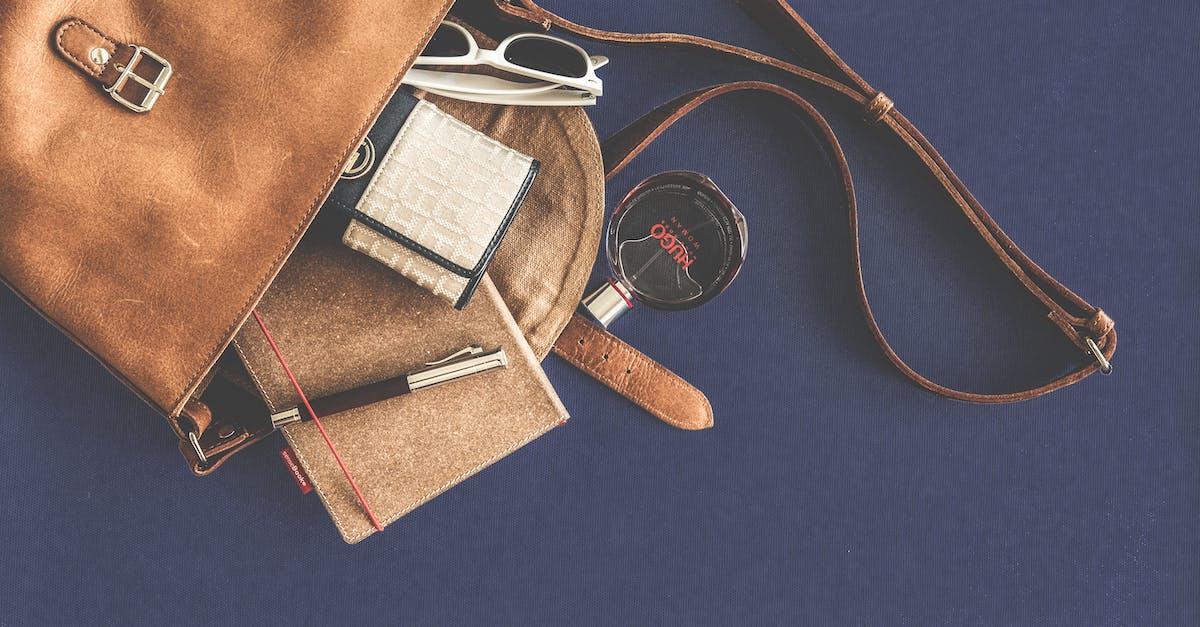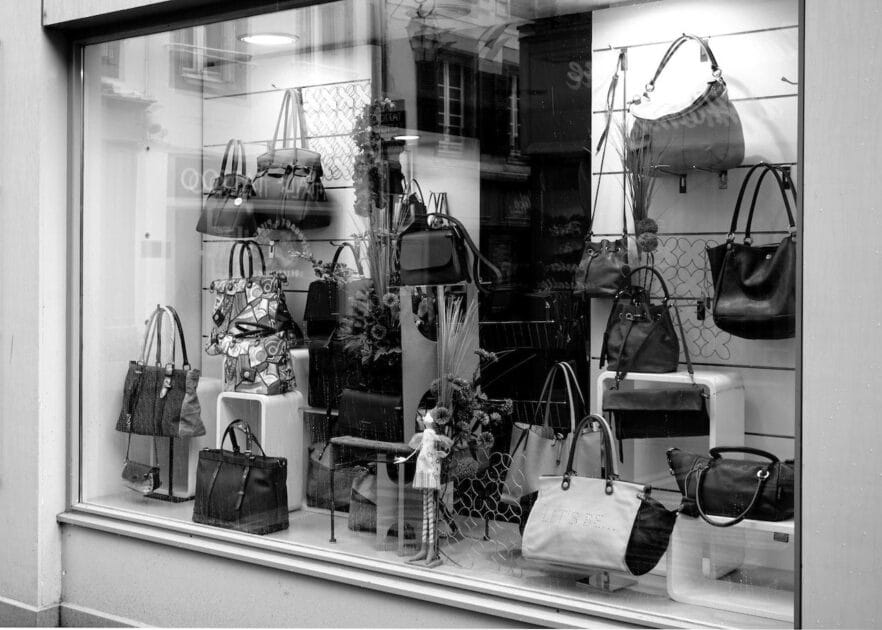Ever found yourself in a checkout line, fumbling through your bag to find your wallet, only to pull out a purse instead? It’s a common mix-up because the terms are often used interchangeably. But there’s a distinct difference between the two that can streamline your shopping experience and organize your life.

A purse is typically a larger accessory, often with a strap, designed to hold your essentials and then some. Wallets, on the other hand, are compact and focused on keeping your cash and cards in order. Understanding the nuances can save you from a bulky bag dilemma or the frustration of a stuffed pocket.
What is a purse?
When you step into the world of handbags, the term “purse” often pops up. Originating from the Latin word “bursa” meaning a bag or pouch, a purse is your go-to accessory for carrying personal items when you’re out and about. Unlike a wallet, a purse is not just for your cash and cards. It’s designed to hold a variety of essentials ranging from your phone to beauty products.
Typically, purses come with straps or handles allowing you to wear them over the shoulder, crossbody, or in your hand, giving you versatility in style and function. The diversity in purse designs means there’s one for every occasion, whether you’re heading to work, going for a casual outing, or attending a formal event.
When selecting a purse, it’s important to consider the size and layout. They generally offer more space and compartments than wallets, making them more suitable for:
- Storing larger items such as books and tablets
- Keeping small essentials organized with multiple pockets
- Accommodating extra items like a compact umbrella or water bottle
Materials also play a crucial role in defining the durability and look of a purse. Leather, for instance, often suggests luxury and longevity, whereas canvas gives a more casual and practical vibe. In terms of fashion, purses can be a statement piece that adds flair to your outfit. They come in an array of colors, textures, and patterns, allowing you to express your personal style while keeping your belongings in check.
Purses are adaptable. They’re not just functional; they allow you to showcase your fashion sense. Whether they’re designer or high-street, spacious or sleek, purses are an indispensable part of your daily ensemble. So when you’re in the market for something that offers more than a wallet but retains style and practicality, a purse is likely what you’re looking for.
What is a wallet?
Think of a wallet as your mini organizer for cash, cards, and IDs. It’s sleek, fitting snugly in your pocket or a compartment in your purse. Wallets streamline what you carry, ensuring essentials are with you without the bulk.
Wallets come in various forms: bifold, trifold, money clip, and cardholder, each with its unique selling points. Bifolds are classics, opening like a book with flat storage for cards and a compartment for bills. Trifolds offer more card slots but can be thicker, while money clips hold cash together and cardholders are for cards only, the minimalist’s dream.
Structure-wise, wallets are predominantly rectangle, designed to conveniently slip in and out of pockets. Leather is a popular choice for its durability and sophistication, but you’ll find wallets made of other materials catered to different needs and preferences.
Beyond function, wallets are personal statements reflecting individual style and often gift choices. They can range from the practical and understated to designer pieces showcasing craft and luxury. Whatever your pick, they serve a clear purpose: simplicity and organization for your on-the-go transactions.
In terms of security, many wallets now offer RFID blocking technology to protect your cards from electronic theft, a modern necessity as digital security becomes paramount.
For maintenance, it’s best to keep your wallet from being overstuffed as it causes wear and can warp the shape over time. Regular cleaning and conditioning, especially for leather, prolong your wallet’s appearance and usability.
Remember, while a wallet can go into a purse, it’s your compact case for everyday financial essentials. Whether you’re stepping out for a quick errand or heading to a business meeting, your wallet is the silent yet crucial companion that carries your economic identity.
Size and design differences
When you’re eyeballing the differences between purses and wallets, size is the immediate standout. Purses offer more real estate; they’re larger and crafted to store a greater number of items beyond financial essentials. Wallets, on the flip side, are compact and focused on the minimalistic carriage of cash and cards.
Dive into design, and you’ll notice purses flaunt a broader range. They can be structured or slouchy, often coming with additional sections for better organization. Wallets, with their intent on sleekness, lean towards a slim build, with specialized slots designed for quick access to your cards and cash.
Here’s a quick glance at purse sizes, typically:
- Small (clutch, wristlet)
- Medium (crossbody, satchel)
- Large (tote, shopper)
Wallet variations include:
- Bifold
- Trifold
- Money clip
- Cardholder
Materials define both, but with purses, there’s more room to experiment. Leather, canvas, or even metal – designers mix it up for that visual punch. Wallets usually stick to leather or fabric, chosen for durability and a refined look.
« What Is the Difference Between a Handbag and a Purse? Uncover the Secrets
Valentino Handbag Warranty: Claim It Right to Repair or Replace »
A purse might come with detachable straps or adjustable handles, transforming in function and style with ease. Wallets remain limited to a singular form – it’s about slipping into your pocket or being a discrete part of your purse.
It’s these size and design differences that categorize purses and wallets into their distinct roles. Your choice swings on necessity and style. Do you need to carry multiple items or is simplicity key? Will your accessory complement your outfit or stand as a statement piece? Choose wisely.
Purpose and functionality
When you’re picking out a purse or wallet, the first thing you need to consider is what you’ll be using it for. Purses are made for those who need to carry more than just money and cards. You’re not just storing your essentials; you may also be toting around items like your phone, a makeup kit, keys, and even snacks for the day.
Wallets, in contrast, are for streamlined organization and quick access to your financial items. Sure, there are some larger wallets that can hold a phone or a few extra bits, but they’re mainly there to compactly house your cash, coins, and cards.
- Purses house diverse belongings, providing organization and style
- Wallets ensure essentials are handy, eliminating clutter
Consider the occasion too. For a night out, a small purse with just enough space for your essentials might be perfect. For everyday use, you might prefer something that can hold everything you’ll need throughout the day.
Wallets favor ease of access. A bifold opens swiftly to reveal your cards, while a money clip keeps cash at the ready. They’re perfect when you’re on the go and need to make transactions fast.
- Purses are versatile: Suitable for various occasions and needs
- Wallets are practical: Ideal for efficiency and essential item storage
Materials and design of your wallet or purse can also influence their purpose. Leather tends to give off a professional vibe and is durable for everyday use, while a canvas purse might suit casual outings. Purses may have different compartments to separate and organize items. Wallets might have RFID-blocking technology to protect your card information from theft.
Think about your lifestyle and pick an accessory that complements it. Whether you’re juggling errands or traveling light, there’s a design that’s right for you.
- Materials: Leather for professionalism, canvas for casual flair
- Security: Wallets with RFID-blocking features for protection
Conclusion
Now you’ve got the scoop on the purse versus wallet debate! Remember, your choice between the two should hinge on what you need for your daily hustle. Want to keep it sleek with just the essentials? A wallet’s your go-to. But if you’re looking to tote around a bit more, from makeup to gadgets, a purse will be your best friend. Don’t forget that style and occasion matter too. So next time you’re gearing up for a day out or planning your outfit, think about what you’ll carry and let that guide your pick. Here’s to finding the perfect match for your pocket or your shoulder – and making it work for you!
Frequently Asked Questions
What is the main difference between a purse and a wallet?
A purse is larger, designed to store a wide range of items, while a wallet is smaller, intended primarily for keeping cash and cards.
Are there different sizes of purses?
Yes, purses come in various sizes, typically classified as small, medium, or large, catering to different storage needs and styles.
What are the common types of wallets mentioned in the article?
The article references several types of wallets, such as bifold, trifold, money clip, and cardholder, each designed for specific carrying preferences.
Can materials vary between purses and wallets?
Materials do vary significantly; purses often feature a wider variety of experimental materials, whereas wallets focus on durability and security.
Do purses have any special features for versatility?
Many purses come with detachable straps or adjustable handles, allowing them to be transformed in function and style to suit various occasions.
How do wallets address security concerns?
Some wallets are equipped with RFID-blocking technology to protect personal information from electronic pickpocketing, addressing modern security concerns.
How should one choose between a purse and a wallet?
The choice should be based on individual necessity, style preference, and lifestyle, considering the purpose, functionality, and the occasion for which the accessory will be used.










